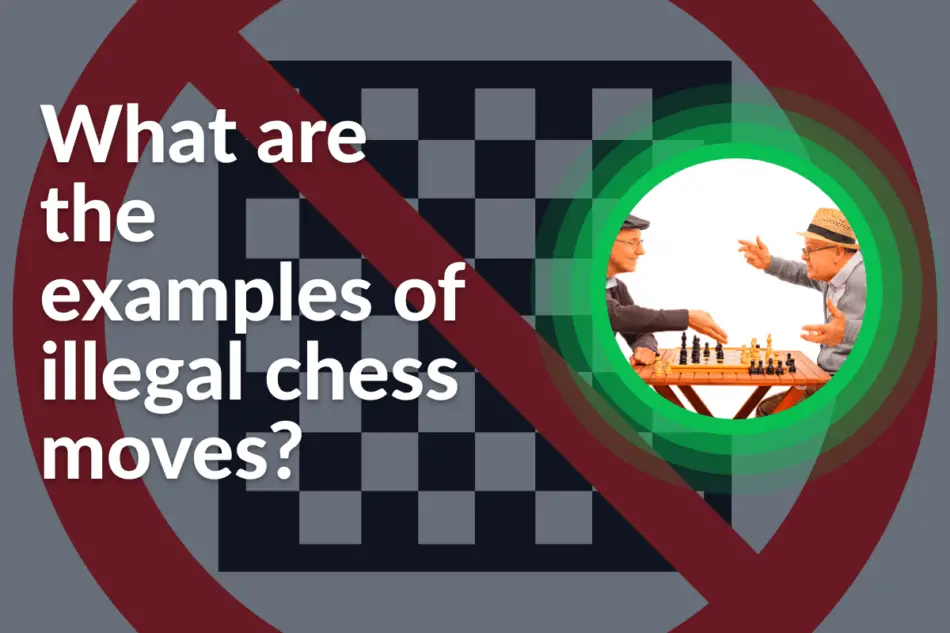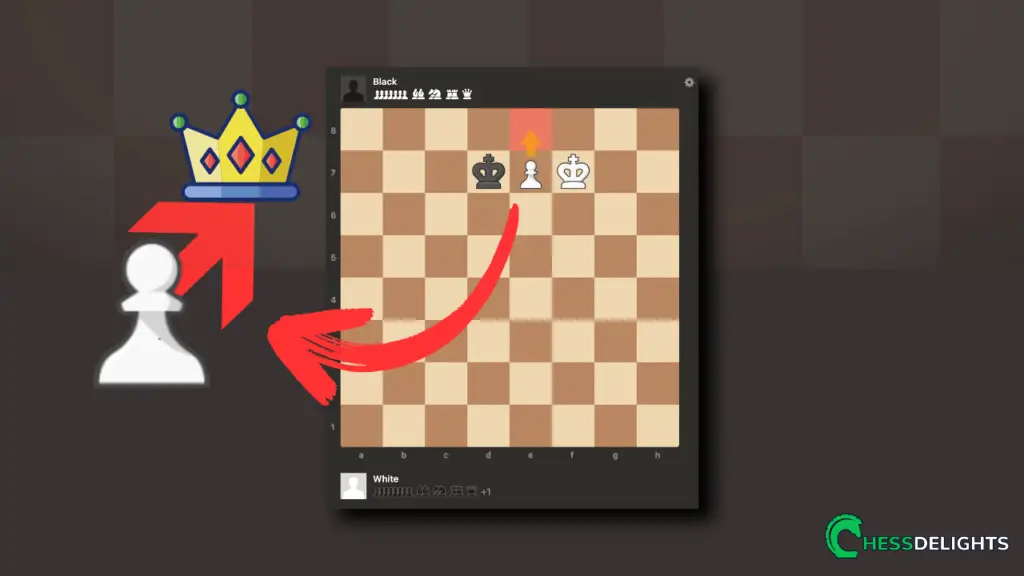So, what happens when you make an illegal move? I always wanted to know what are the illegal chess moves according to some official rules.
I have committed illegal moves myself and experienced playing with chess players who made an illegal move, but the problem is sometimes both of you don’t have an idea that it was an illegal move.
What will happen is we’ll not be informed and might commit the same mistake over and over again till someone knowledgeable about the illegal moves in chess will finally correct you.
That is why in this article, I wanted to share with you a sort of guide about illegal moves in chess so you will have a piece of general knowledge and avoid these moves while playing an actual game of chess.
Table of Contents
What are the illegal chess moves you should know?
In chess, understanding the rules is crucial for fair play. Certain moves are considered illegal and can lead to confusion during a game. Below are some common illegal moves to be aware of:
Illegal Chess Moves
- Moving a Piece to an Occupied Square: A player cannot move a piece to a square already occupied by one of their own pieces.
- Moving a Pawn Backward: Pawns can only move forward. A backward move is not allowed.
- Castling through Check: Castling is illegal if the king is in check, if the square the king passes through is attacked, or if the square the king lands on is attacked.
- En Passant Misuse: A pawn can only capture en passant immediately after the opponent moves a pawn two squares forward from its starting position.
- Moving the King into Check: A player cannot move their king into a position where it would be in check.
- Incorrect Knight Moves: Knights can only move in an “L” shape; any other movement is illegal.
- Promoting to an Invalid Piece: When a pawn reaches the opposite end of the board, it must be promoted to a queen, rook, bishop, or knight, but not to another pawn or king.
- Multiple Moves in One Turn: Players must only make one move per turn unless castling or capturing en passant.
- Using the Wrong Color Pieces: Players must use their designated color pieces and cannot mix colors during the game.
- Moving a Piece Without Touching It: A player must touch a piece before moving it; if they touch it, they are obligated to move it if legally possible.
Understanding these illegal moves helps maintain the integrity of the game and ensures a smoother experience for all players involved.
Recommended Reading: If you want to learn if you can undo a move in chess, read this article.
Not all irregularities make-up illegal chess moves
The first thing to say is that not everything that is done wrong in a game of chess is an illegal move. Countless irregular situations can happen; players can make involuntary mistakes due to distraction or ignorance. There can also be situations where a chess player acts with negligence or bad faith, but all this is not synonymous with illegal play.
Illegal moves are a few situations that are defined explicitly in the FIDE Laws of Chess. Also, currently, a couple of conditions specified in the Interpretations of the Referees Commission and the FIDE Regulations Commission must be added.
Currently, any of the following situations are considered illegal play in chess:
A movement that does not meet the relevant requirements of Articles 3.1 to 3.9 (Article 3.10.2)
- Any play where a piece is moved with an inappropriate movement (for example, moving a Knight as if it were a Bishop).
- Moving a piece to a square occupied by another piece of the same color.
- Moving a piece to a square occupied by an opponent's piece and not removing the board's captured piece.
- Moving Bishop, Rook, or Queen is passing over other pieces.
- Move a pawn to the last row, and do not replace it with another chess piece.
- Moving a pawn to the last row and replacing it with any object that is not a Queen, Rook, Bishop, or Knight of the same color as the Pawn.
- Make a move leaving your own King in check.
- Castling when it is not valid to do so (because the King or the Rook with which he castled has moved, the King is in check, there are pieces between the King and the Rook, or the destination square or one of the squares is attacked through which the King must pass).
Move a pawn to the farthest row and press the clock without having replaced the pawn with a new piece (Article 7.5.2)
If the game continues (first illegal in classical chess), the referee will replace the pawn with a queen of the same color (the offender loses the right to choose the crowning piece).
Use both hands to make a move in case of castling, capture, or promotion (Article 7.7.1)
For the first offense, the arbiter will grant two minutes of extra time to his opponent. If the same player commits a second infraction of Art.7.7.1, the arbiter will declare the game's loss for the offender. However, the arbiter will call a draw if the position is such that the opponent cannot checkmate the offender's King by any legal series of moves. (Art. 7.7.2).
Pressing the chess clock without having performed a move (Article 7.8.1)
For the first offense, the arbiter will grant two minutes of extra time to his opponent. If the same player commits a second infraction of Art.7.8.1, the arbiter will decree the game's loss for the offender. However, he will call a draw if the position is such that the opponent cannot checkmate the offender's King by any legal series of moves (article 7.8.2).
Capture the opponent's King (Point 4 of the Interpretations of the Referees Commissions and Regulations)
Any other situation that is not one of those described above does not constitute an illegal move.
If a player makes a play with one hand and presses the clock with the other, it is not considered an illegal play (Point 9 of the Interpretations of the Referees and Regulations Commissions)
What happens when illegal chess moves occur?
- Illegal Moves: If a player makes a move that will be illegal when they press the chess clock, they can still fix it if they notice before pressing the clock. For example, if a player moves a Knight like it's a Bishop but realizes it before pressing the clock, they can take back the Knight and move it correctly.
- Blitz Games: In fast games (like blitz), sometimes a player makes a move that will be illegal once they press the clock. If their opponent notices and signals that the move is illegal before the player presses the clock, the player can still correct their move as long as they haven’t pressed the clock yet.
- Pieces on Squares: If a player puts a piece down on a square, it usually cannot be moved again on that turn. However, if the player hasn’t pressed the clock yet, they can still change their move.
- No Legal Moves Available: If a player moves a piece that can’t legally move (like a Knight that is pinned and would put the King in check), and they notice this before pressing the clock, they can put the piece back where it was and move a different piece that can be moved.
- Touched Pieces Rule: There’s a rule about touching pieces. If a player touches one of their pieces, they have to move that piece if it can legally move. If none of the touched pieces can move, then the player can make any legal move.
Wrapping Up
A piece of simple advice regarding not knowing if a move is a legal or illegal move is never to commit that move without asking or researching first.
Your knowledge of illegal chess moves will slowly increase that you don’t have to keep on asking an arbiter or someone you know is knowledgeable than you in chess.
In any other case, you can always refer to this article or even share this article with your friends who might have a question or you think have committed an illegal chess moves.
Recommended reading: If you want to learn what's the best way to learn chess, read this article.
If you still have any doubt, I will be adding articles, videos that I think is very useful, and an official handbook below where you can read and refer to answers to your illegal chess move questions:
https://handbook.fide.com/chapter/E012018
https://www.fide.com/FIDE/handbook/LawsOfChess.pdf
https://www.chess.com/forum/view/general/fide-illegal-move-clarification
https://www.chess.com/forum/view/general/fide-illegal-move-clarification
https://chess24.com/en/read/news/the-7-most-illegal-chess-moves-of-all-time







